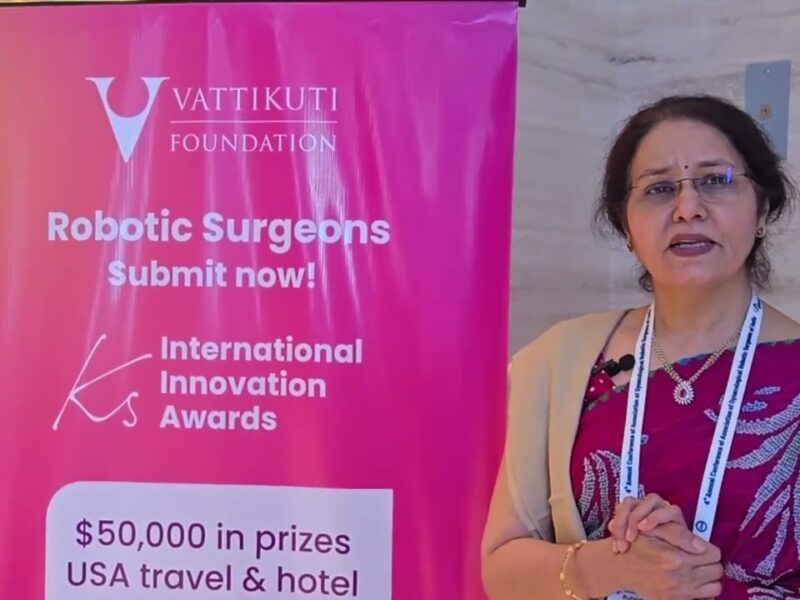Complete minimally-invasive surgery for level IV Renal Cancer
This video was entered by Dr. Antonio Galfano in the 2022 KS International Robotic Surgery Innovation Awards, sponsored by the Vattikuti Foundation. It was featured in the Vattikuti Symposium ‘Humans at the Cutting Edge of Robotic Surgery,’ held in Miami, Florida November 19, 2022.
Here is the Abstract:
Authors: Paolo Dell’Oglio1,2,3, Mattia Longoni1, Stefano Tappero1,4, Francesca Mulazzani5, Dario Di Trapani1, Elena Strada1, Erika Palagonia1, Giancarlo Napoli1, Silvia Secco1, Alberto Olivero1, Giovanni Petralia1, Michele Barbieri1, Massimiliano Carrozzini6, Elena Roselli5, Andrea Brunetti5, Aldo Massimo Bocciardi1, Giuseppe Bruschi6, Ombretta Amici5, Antonio Galfano1
1 Department of Urology, ASST Grande Ospedale Metropolitano Niguarda, Milan, Italy
2 Department of Urology, Antoni van Leeuwenhoek Hospital, The Netherlands Cancer Institute, Amsterdam, the Netherlands
3 Interventional Molecular Imaging Laboratory, Department of Radiology, Leiden University Medical Center, Leiden, the Netherlands
4 Department of Urology, Policlino San Martino Hospital, University of Genova, Genova, Italy
5 Department of Anesthesiology and Intensive Care, Transplantation Department, ASST Grande Ospedale Metropolitano Niguarda, Milan, Italy
6 A. De Gasperis Cardiology and Cardiac Surgery Department, ASST Grande Ospedale Metropolitano Niguarda, Milan, Italy
Introduction: In this video we describe our technique of a complete minimally-invasive surgery for renal cancer with level IV intracardiac tumour thrombus.
Methods: An 83-year-old woman presented to the Emergency department with flank pain. CT- scan showed a 5.8 cm right renal mass with 8.0 cm inferior vena cava (IVC) tumour thrombus extending 1.5 cm into the right atrium. Standard surgery (i.e.: laparotomy combined with sternotomy and extracorporeal circulation) was contraindicated. A less invasive approach was performed, consisting of a robotic radical nephrectomy and cavo-atrial thrombectomy with SI system combined with AngioVac system and extracorporeal circulation. After kidney isolation, liver rotation, right renal artery dissection and IVC isolation, the ECMO was started and AngioVac catheter was inserted through the right jugular vein under transoesophageal ultrasound guidance. The device was used to aspirate and push the thrombus into the retro- hepatic IVC, while a robotic ultrasound probe was used to identify the upper end of the thrombus. After clamping the infra-renal IVC, the left renal vein and the retro-hepatic IVC above the thrombus, IVC was opened and the thrombus was entirely removed alongside the kidney.
Results: Operative time and blood loss were 9 hours and 2000 ml. Final pathology: clear cell RCC pT3cN0. Post-operative CT scan found no residual tumour or thrombus. The patient was discharged after 90 days, including rehabilitation. At 6-month follow-up, the patient is alive, disease-free and without neurological impairments.
Conclusion: Complete minimally-invasive surgery for level IV renal cancer is a feasible highly-challenging procedure that requires multidisciplinary cooperation.
See more at: vattikutifoundation.com/videos
Date
August 15, 2020






